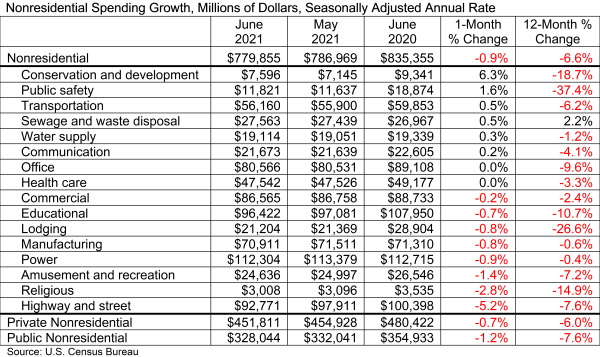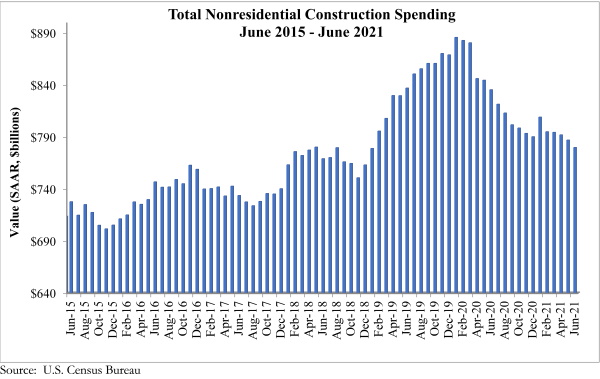WASHINGTON, Aug. 2—National nonresidential construction spending declined 0.9% in June, according to an Associated Builders and Contractors analysis of data published today by the U.S. Census Bureau. On a seasonally adjusted annualized basis, nonresidential spending totaled $779.9 billion for the month, down 6.6% from one year ago.
Spending was down on a monthly basis in eight of 16 nonresidential subcategories. Private nonresidential construction spending fell 0.7%, while public nonresidential construction spending fell 1.2% in June. Year-over-year spending was down in 15 categories. Private nonresidential construction spending has declined 6% on a year-ago basis, while public spending is down 7.6%.
“Since achieving an all-time high in January 2020, nonresidential construction spending is down 12%,” said ABC Chief Economist Anirban Basu. “With each passing month, the deficit vis-à-vis the all-time high continues to expand. June was no exception, with both private and public nonresidential construction declining.
“For economists, this presents a bit of a paradox,” said Basu. “Many contractors report rising backlog and strong expectations for sales, staffing and profit margin growth over the balance of the year, according to ABC’s Construction Backlog Indicator and Construction Confidence Index. Yet the macroeconomic data continue to show an industry struggling to stabilize from the pandemic-induced recession.
“There is a logical explanation,” said Basu. “Despite the lingering pandemic and elevated materials prices, demand for construction services remains high. But this lofty demand is failing to translate into construction spending growth because available capacity to supply services is so constrained, especially by expanding skills shortages. This means the average project is taking longer to complete. It also translates into diminished construction spending on a monthly basis since less services are delivered. Consequently, individual firms generally remain confident about the future given the presence of demand for their services as well as rising backlog, but the macroeconomic outcomes remain uninspiring as quantity supplied struggles to match quantity demanded.”










